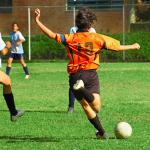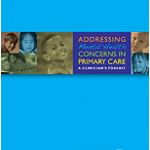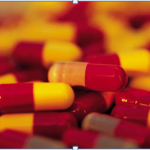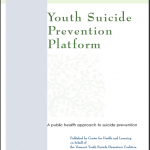by David Fassler, MD
Clinical Professor of Psychiatry, UVM College of Medicine
The following was previously posted in a blog for Scientific American and adapted for this blog.
The next time a teenager behaves inexplicably, remember: his brain is like a car without brakes. The more primitive parts of the brain are well developed, acting like a powerful accelerator encouraging teens to take risks, act on impulse and seek novel experiences. But the areas that control planning and reasoning have not yet matured. As a result, teens are less likely to stop, think things through, modify their behavior or fully consider the consequences of their actions.

Dr. Fassler, testifying in Nevada
On March 20, the U.S. Supreme Court will hear two cases, Jackson v. Hobbs and Miller v. Alabama, concerning teenagers who have committed homicide offenses. The Court will consider whether they should be eligible for sentences of life in prison without the possibility of parole. The medical and mental health community have been following these cases closely, and providing input to the Court on the science of adolescent brain development. The American Medical Association, the American Academy of Child and Adolescent Psychiatry, the American Psychological Association and the American Psychiatric Association, among others, have filed amicus briefs emphasizing just how different teen brains are from those of adults.
What we know
In the 1970s, it was widely assumed that brain development was essentially complete by the age of three. Today, we know this is far from the case. The brain continues to mature and develop throughout adolescence and even into early adulthood. The teenage years, in particular, are a very active and important time for brain development.
During adolescence, there is a rapid increase in the interconnections between the brain cells. Gray matter grows, followed by a refinement, or “pruning,” of the connections and pathways. We also see an increase in the white matter, or myelin. The myelin acts as an insulator and enhances communication at the cellular level. It is essential for coordinated thought, action and behavior.
The instinctual parts of the brain develop first followed by the regions that control reasoning and help us think before we act. Specifically, the amygdala, which is a more primitive part of the brain responsible for gut reactions, including fear and aggressive behaviors, develops before more advanced areas like the frontal lobes, which help us control our impulses, emotions and responses.
Research has shown that adolescents actually use their brains differently than adults when attempting to reason, solve problems, or deal with stressful situations. For example, they tend to rely more on these instinctual structures, like the amygdala, and less on the more advanced areas, like the frontal lobes, which are associated with more goal-oriented and rational thinking.
Teenagers are less likely to use the part of the brain that asks “’Is this a good idea? What is the consequence of this action?’ It’s not that they don’t have a frontal lobe. But they’re going to access it more slowly,” Frances Jensen, a pediatric neurologist at Children’s Hospital in Boston, recently explained on National Public Radio.
Research has also identified at least two other areas of the brain that undergo significant growth and development during adolescence. These are the corpus callosum, which connects the two halves, or hemispheres, of the brain, and the cerebellum, which is located at the base of the brain.
The corpus callosum, which creates a pathway from one side of the brain to the other, facilitates problem solving. The cerebellum primarily controls physical coordination and movement, but also helps organize our thought processes. All of these anatomical structures — the amygdala, the frontal lobes, the corpus callosum, and the cerebellum — are physically changing and maturing throughout adolescence.
Based on the stage of their brain development, teenagers are more likely to act on impulse, misread social cues and others’ emotions, get into fights and accidents, or engage in more serious risk-taking behavior, like driving recklessly or while intoxicated. Because adolescents are less likely than adults to think before they act, every state has laws restricting them from activities that require mature judgment, including voting, serving on juries and purchasing alcohol.
In 2005, the Supreme Court cited scientific studies when it struck down the death penalty for people under the age of eighteen. The Justices relied on similar reasoning in 2010 when they abolished sentences of life without parole for juveniles convicted of non-homicide offenses. Hopefully, their consideration of these new cases will once again be informed by the scientific data and our contemporary understanding of adolescent brain development.
 the designated patient, but for the adults as well, can have a profound effect on the family culture. I recently reviewed this 9 minute video: 23 and 1/2 hours: what is the single most important thing for your health? (spoiler alert!) regarding the benefits of exercise. The video was created by Mike Evans, MD, a family physician at St. Michael’s Hospital and an Associate Professor of Family Medicine and Public Health at the University of Toronto. The video uses an animated white board technique and is filled with compelling and accessible evidence regarding the health and mental health benefits of daily exercise.
the designated patient, but for the adults as well, can have a profound effect on the family culture. I recently reviewed this 9 minute video: 23 and 1/2 hours: what is the single most important thing for your health? (spoiler alert!) regarding the benefits of exercise. The video was created by Mike Evans, MD, a family physician at St. Michael’s Hospital and an Associate Professor of Family Medicine and Public Health at the University of Toronto. The video uses an animated white board technique and is filled with compelling and accessible evidence regarding the health and mental health benefits of daily exercise.






